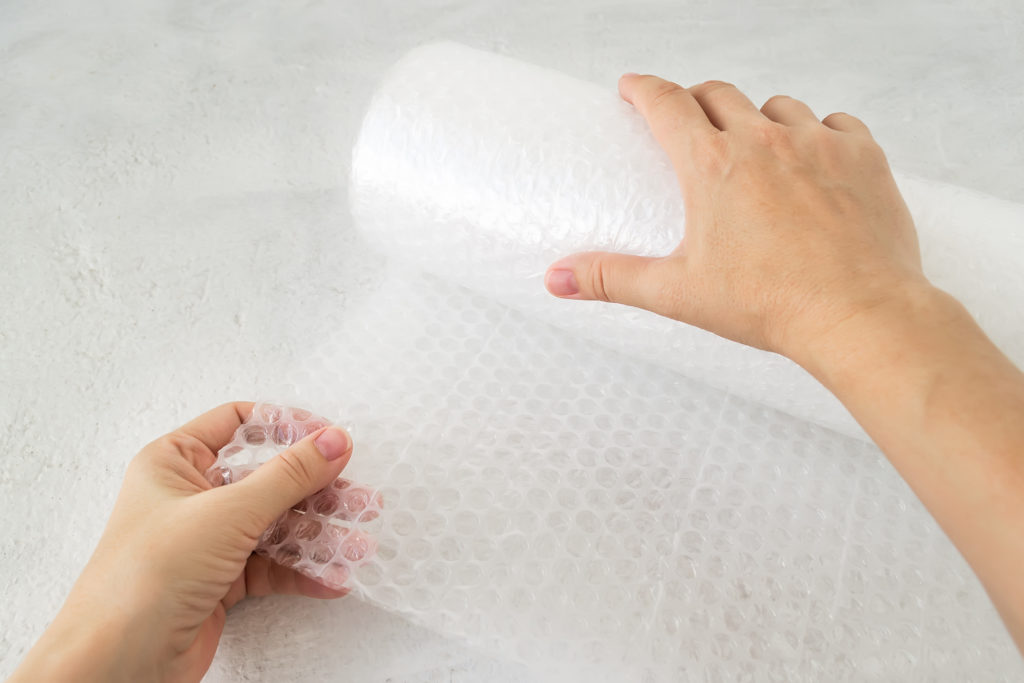Plastic bubble wrap has been the go-to solution for packaging and mailing fragile goods since it was invented in the 1950s. And with the rise of online shopping in the last two decades, the market for bubble wrap has continued to grow rapidly.
In 2020 the bubble wrap market was worth $7.4 billion and is expected to increase to over $10 billion by 2027. This reveals how unsustainable our reliance on those little pockets of air has become.
The need to ensure that as little of it ends up in landfill as possible is clear, because similarly to other plastics, bubble wrap is not biodegradable and disposal methods such as incineration release harmful toxins into the atmosphere. So, while the good news is that bubble wrap is indeed recyclable, this solution comes with many caveats.
Can you recycle bubble wrap?
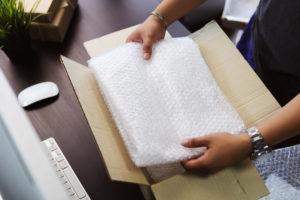 Yes, bubble wrap is recyclable, but it’s not a part of municipal curbside recycling programs in the US. This is because bubble wrap is made from low-density polythene (LDPE) and most home collection schemes are restricted to high-density polyethylene (HDPE) and polyethylene terephthalates (PET) which include harder plastics like water bottles or types 1 and 2.
Yes, bubble wrap is recyclable, but it’s not a part of municipal curbside recycling programs in the US. This is because bubble wrap is made from low-density polythene (LDPE) and most home collection schemes are restricted to high-density polyethylene (HDPE) and polyethylene terephthalates (PET) which include harder plastics like water bottles or types 1 and 2.
Unfortunately, this means bubble wrap most likely ends up in landfill where it will take thousands of years to break down.
Why can’t bubble wrap go in regular plastics recycling?
Although bubble wrap is recyclable, soft plastics such as these are excluded from municipal recycling programs because they cannot be processed as easily or as economically as harder plastics can. Low-density polyethylene, especially in film form, can easily clog up large recycling machines and cause malfunctions or even injury to sanitation technicians, costing time and money.
Where to recycle bubble wrap?
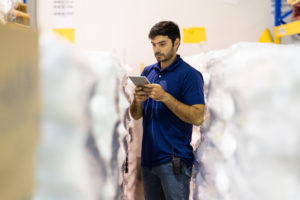 There are some ways we can make sure our bubble wrap doesn’t end up in landfill or the environment. If you’re wondering where exactly to recycle bubble wrap near you, the simplest options are recycling centers that accept a wider range of materials for recycling than home collection programs do. Green Citizen has a useful search tool that can be tailored to the specific material you want to recycle, the area you live in, or how far you are willing to travel.
There are some ways we can make sure our bubble wrap doesn’t end up in landfill or the environment. If you’re wondering where exactly to recycle bubble wrap near you, the simplest options are recycling centers that accept a wider range of materials for recycling than home collection programs do. Green Citizen has a useful search tool that can be tailored to the specific material you want to recycle, the area you live in, or how far you are willing to travel.
Additionally, many grocery stores and pharmacies have plastic film recycling bins available for use. These bins will accept all soft plastics that come under Resin Identification Code (RIC) 4. As well as bubble wrap, this includes things like plastic film, shopping bags, and bread bags. If you aren’t aware of any such locations near your home, there are online databases such as Earth911 and Plastic Film Recycling that will help you find the nearest option.
When preparing to drop off your bubble wrap at a recycling center or public store, it’s important to check over your recycling beforehand. Ensure that all the air bubbles have been popped before you toss it. Secondly, remove any labels or adhesives from the bubble wrap as these can cause problems during processing.
As an alternative to the above, some businesses allow you to return their bubble wrap and will actually recycle it for you, including the inventors of bubble wrap themselves, The Sealed Air Corporation.
Can you recycle bubble mailers?
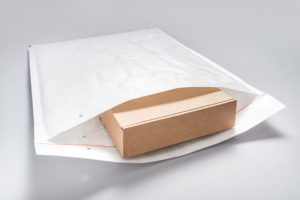 Plastic bubble wrap mailers or envelopes are a different kind of challenge. Sometimes these are made entirely of plastic and can be recycled in the same way described, at a local recycling point. However, more often than not, this form of packaging is made from a combination of plastic and paper, which makes it impossible to recycle without separating the two elements completely. This is not easily feasible so certain bubble wrap mailers leave the recipient with no option to recycle.
Plastic bubble wrap mailers or envelopes are a different kind of challenge. Sometimes these are made entirely of plastic and can be recycled in the same way described, at a local recycling point. However, more often than not, this form of packaging is made from a combination of plastic and paper, which makes it impossible to recycle without separating the two elements completely. This is not easily feasible so certain bubble wrap mailers leave the recipient with no option to recycle.
Should you recycle bubble wrap?
Just because bubble wrap is technically recyclable, does that mean we should recycle it? That depends. When moving towards zero waste, it’s always preferable to reuse before recycling, and bubble wrap is no exception to the rule. Recycling bubble wrap uses energy and where possible it should be put to additional use first.
By continuing to use bubble wrap, we are encouraging the status quo and thus doing little to reduce plastic production. And although many businesses have opened their eyes and ears to the plastics problem, it’s far from solved. Six times more plastic is burned in the US than is recycled, so while a product can be recycled, it doesn’t follow that its manufacture and use is not harmful.
What can we do to reduce waste caused by bubble wrap?
The obvious solution before recycling is to use and reuse bubble wrap for as long as possible. Thankfully these products are usually robust enough for many more years of use and there are dozens of practical ways we can lengthen their lifespan.
As a business, offering take-back programs to consumers will help keep these difficult-to-recycle materials in the loop. It also has the added benefit of reducing packaging costs through effective reuse, minimizing the need for new materials created and used to package goods. Additionally, there are many alternatives to this type of packaging that work perfectly well, and there are multiple companies working to make packaging more sustainable.
Are there any zero waste packaging alternatives to bubble wrap?
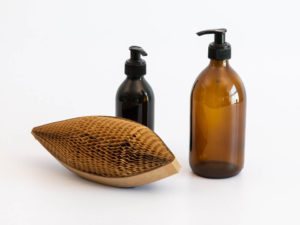
Flexi-Hex honeycomb design made from paper (photo courtesy of www.flexi-hex.com)
There are many zero-waste packaging alternatives to bubble wrap out there for businesses and individuals. Made from 100% recycled cardboard, Flexi-Hex’s patented honeycomb cardboard mesh is just one such solution. Flexi-Hex has a wealth of applications in protecting fragile goods, from wine bottles to surfboards, and is far more customizable than bubble wrap.
Beyond this, there are biodegradable packaging solutions appearing all the time from companies like Returnity, EcoEnclose and The Better Packaging Company. Not only are these packaging innovations more environmentally friendly in their afterlife, but they also usually draw on recycled materials in the first place.
Reducing, recycling, and reusing bubble wrap are all viable steps that we can take to limit the amount of plastic that ends up in landfill. However, with the shift towards more sustainable packaging coming closer every day, bubble wrap may become obsolete in the near future and businesses should prepare for this by switching to more sustainable materials now.
For information on how your business can tackle food waste, contact one of our TRUE advisors today. For more information on sustainable waste management, reduction, and recycling, subscribe to the RTS blog.

